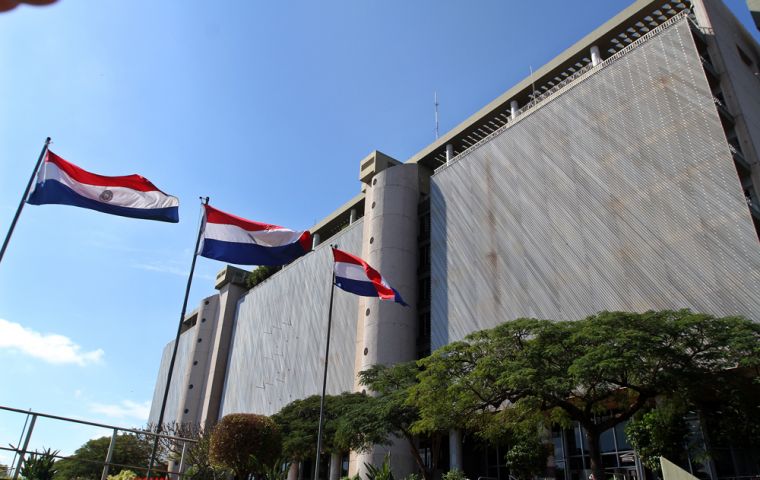MercoPress. South Atlantic News Agency
Inflation forecast adjusted downward in Paraguay
 The Paraguayan guarani was one of the currencies in the region to lose the least against the US dollar
The Paraguayan guarani was one of the currencies in the region to lose the least against the US dollar Paraguay's Central Bank lowered its inflation forecast for this year from 8.8% to 8.6%, it was reported Monday in Asunción. Meanwhile, Consumer Price Index (CPI) projections for 2023 remained unchanged from the BCP's previous outlook at 4.1%.
The BCP's Monetary Policy Report for September 2022 also kept Gross Domestic Product (GDP) growth projections at 0.2%.
“The lower external price pressures observed in the third quarter, the moderate dynamism of local economic activity -[the] negative output gap- and the transmission of monetary policy rate adjustments contributed to contain the acceleration of domestic inflation in the last period,” the document noted.
The report also warned that “uncertainty continues regarding the economic outlook, with a clear bias towards a more pessimistic outcome” in the current global scenario amid inflationary pressure and further deterioration in global financial conditions, in addition to the crisis stemming from the war between Ukraine and Russia.
The weather would also play a key role in local economic activity because “probabilities persist that a drought (”la niña”) will be recorded again in the coming months, which ... would have its implications on economic activity, domestic demand, exports, and the exchange rate.“
Last Friday, a BCP leading economist forecasted that the US dollar would continue to rise against the Paraguayan guarani as a consequence of inflation in the United States and global demand for US currency.
BCP chief economist Miguel Mora said in a radio interview that the US dollar would be affected after adjustments by the US Federal Reserve.
”The levels of the monetary policy rate were from 0 to 0.5%, but after reiterative strong adjustments, of 0.75%, the rate stood at a level of 3.25%. An important acceleration and with a perspective that these adjustments will continue as a consequence of the fact that inflation is still high above 8%,“ he said.
”There are external factors. The main one is the normalization policy of the US Federal Reserve, which has undertaken an adjustment of its monetary policy rate as a consequence of what affects all countries, which is inflation“, Mora also said. He also recalled that as a rebound effect there was a high appreciation of the dollar worldwide, which is around 17%, with a year-on-year of 20.3%; while other currencies are suffering a strong depreciation since April 2022.
”Regional currencies have also depreciated, including the Colombian peso, the Brazilian real, the Chilean peso, the Peruvian sol, and logically this trend has also escaped Paraguay, but (the guarani) has been one of the currencies that have depreciated the least against the dollar,” he added.
This upward trend had affected Paraguay's inflation since some products have their prices linked to the US dollar, Mora explained.




Top Comments
Disclaimer & comment rulesCommenting for this story is now closed.
If you have a Facebook account, become a fan and comment on our Facebook Page!